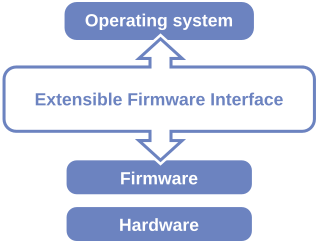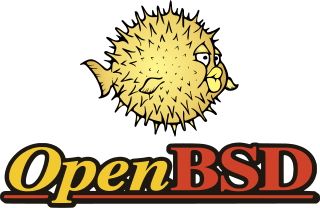Open source operating systems
Some FSF-approved projects strive to provide a free operating system and will remove all binary blobs when no documentation for hardware or source code for device drivers and all applicable firmware is available; such projects include Linux-libre kernel packaging from FSFLA, Parabola, Devuan, Trisquel, and LibreCMC. [10] However, the vast majority of open-source projects make a distinction between binary-only device drivers (blobs) and binary-only firmware (not considered blobs [11] : ... ), allowing for certain proprietary firmware to be freely distributed as part of their kernels, and, to the disagreement of some core contributors, also support the use of proprietary device drivers that are distributed externally, providing internal compatibility interfaces for such proprietary drivers and userspace components to work with their system. [12] [13] Projects following this policy include the Linux kernel itself, NetBSD, FreeBSD, DragonFly BSD, and most Linux distributions. [14] Some of these projects do provide options for building the system without proprietary firmware, thus excluding sourceless microcode on demand. [15]
The OpenBSD project has a notable policy of not only not accepting any binary device drivers into its source tree, but also officially not supporting any third-party proprietary device driver components on its platform, either; [16] : 38... citing not only the potential for undetectable or irreparable security flaws, but also the encroachment onto the openness and freedom of its software. [17] The Free Software Foundation (FSF) is actively campaigning against binary blobs. [18] FSF also considers OpenBSD's policy confusingly worded, as "blobs" in the BSD community refer only to what it considers non-free drivers, and does not apply to proprietary firmware and sourceless microcode. [19] : BSD The Debian project included both free and non-free binary firmware from the Linux kernel, clearly marking and separating the non-free packages [20] according to the Debian Social Contract. As of Debian 6.0 those blobs were removed. [19] : Debian
For OpenBSD, project leader Theo de Raadt defends the policy of asking for distribution rights only for microcode firmware. "Once they are distributed... at least the device works." Implying that the alternative would be for the members of his small project to code free firmware themselves in the assembly language of many chipsets, he pleads "don't load us up with more tasks." Despite this he favours chipsets that run without firmware and speaks warmly of Asian designs which he describes as slower to market but more mature. [17]

In the Linux kernel development community, Linus Torvalds has made strong statements on the issue of binary-only modules, asserting: "I refuse to even consider tying my hands over some binary-only module", and continuing: "I want people to know that when they use binary-only modules, it's THEIR problem." [21] In 2008, 176 Linux kernel developers signed a Position Statement on Linux Kernel Modules that stated "We, the undersigned Linux kernel developers, consider any closed-source Linux kernel module or driver to be harmful and undesirable... We have repeatedly found them to be detrimental to Linux users, businesses, and the greater Linux ecosystem." [22] The Linux kernel maintainer Greg Kroah-Hartman has stated that it is illegal to redistribute closed source modules for the GNU General Public License-licensed Linux kernel. [23]
However, the Linux kernel contains closed-source firmware required by various device drivers. [24] [19] Alexandre Oliva, the maintainer of Linux-libre, a version of the Linux kernel that attempts to remove all binary blobs, including sourceless microcode, wrote in 2011: "Linux hasn't been Free Software since 1996, when Mr Torvalds accepted the first pieces of non-Free Software in the distributions of Linux he has published since 1991. Over these years, while this kernel grew by a factor of 14, the amount of non-Free firmware required by Linux drivers grew by an alarming factor of 83." [25]
Most of the drivers for mobile devices running the Android operating system are shipped in binary and are linked against a specific version of the Linux kernel. This makes it very hard to upgrade a kernel version because it may require reverse-engineering, reimplementing the proprietary device drivers as free software, creating and debugging wrappers, binary patching, or a combination of these steps, all of which implies that legacy devices will never get the latest Android version.[ citation needed ]













